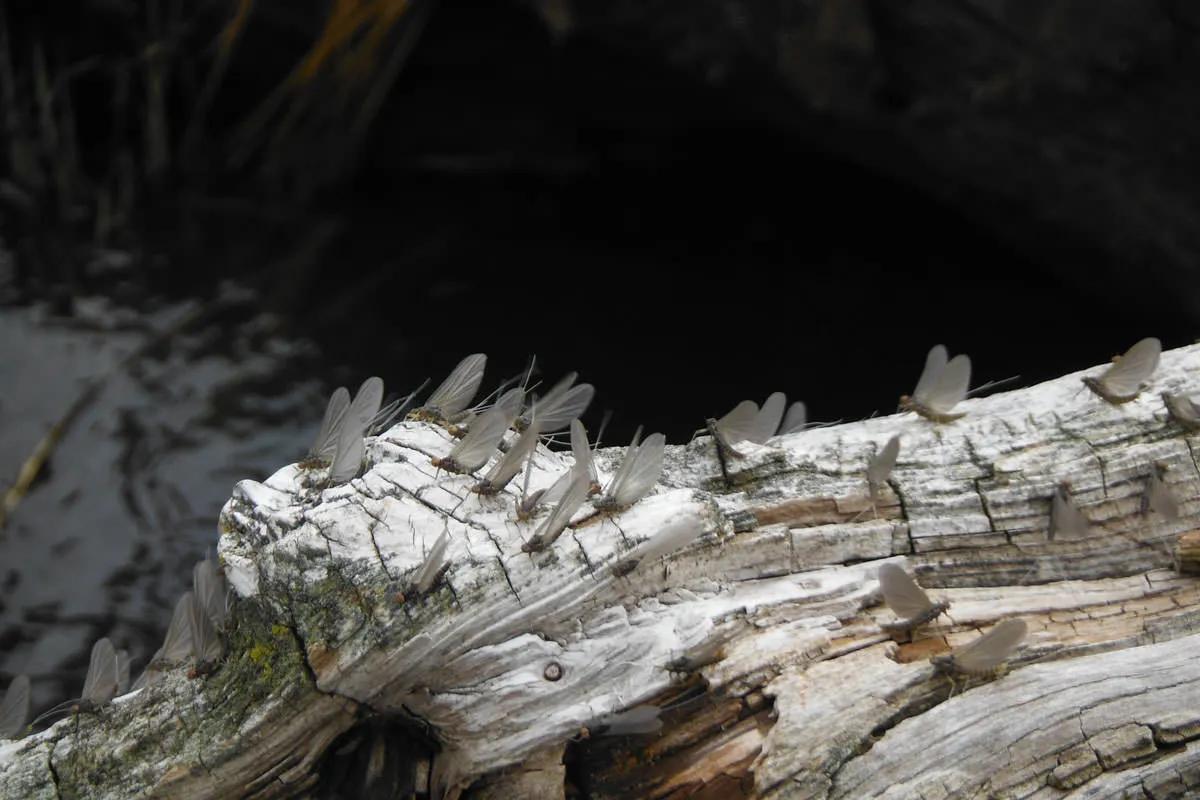
Mayflies make up a large portion of any trout's diet. From the limestone creeks of the East to the untamed rivers of Chile, Argentina, and New Zealand, to our home waters in Montana, dozens of mayfly species provide food and forage for trout to grow healthy and large. Narrow the list of the dozens down to a handful, and the Blue-Winged Olive (BWO) mayfly rises on the list to one of the most important mayflies species for trout anglers and fishing guides. Blue-Winged Olives are not the only mayfly of significance, but in fall and spring, knowledge of Blue-Winged Olives, their hatches, and specific fishing tips to use will help you catch more fish.
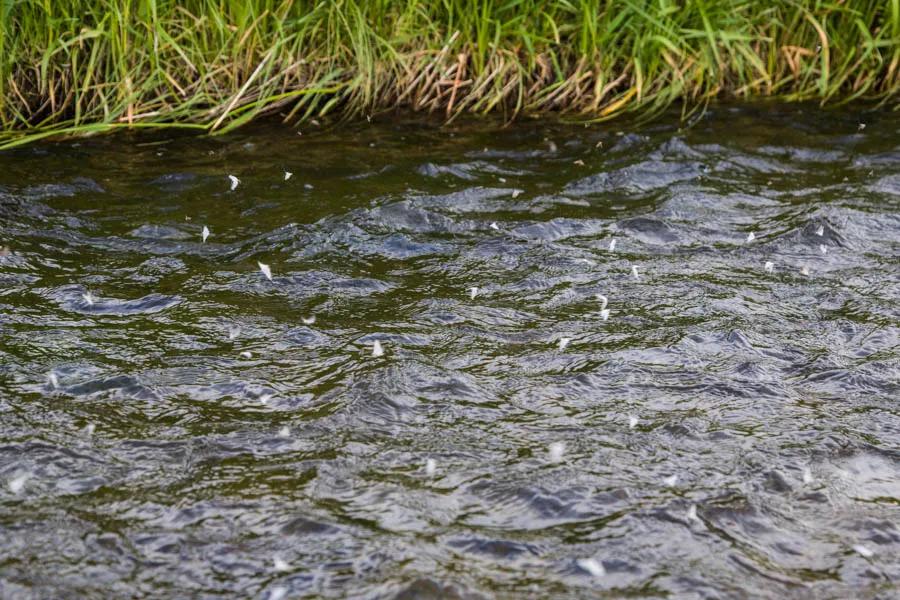
Get to Know the B W O
"BWO" is a general abbreviation for an olive-bodied mayfly with blue wings. Blue-Winged Olives – or “BWOs” – are in the family Baetidae and you do not need to know the Latin name. But you do need to know their lifecycle: egg, nymph, emerger, adult, and spent adult. The eggs are microscopic, so not important to anglers. Nymphs are active on the river bottom and submerged structure year-round. Emergers are active as a hatch begins. Adult mayflies can be seen on the water's surface or flying above the surface. Spent adults are most lifeless and floating on the surface. Because mayfly nymphs live under the water's surface, they are consumed by trout nearly 80% of the time more than emergers or adults. At the beginning of a hatch mayfly nymphs become active. Once a hatch commences, mayfly nymphs metamorphose into emergers by shedding their nymphal skin, or shuck. Emerging mayflies swim to the surface to begin another change into an adult. Emerging mayflies make up another 5-10% of a trout's mayfly menu. Another 5-10% is when the emerging mayfly reaches the surface and transforms again into an adult mayfly. Adult mayflies make up the "dry fly" stage. Adult mayflies will sit on the surface until their wings are fully developed and dry, then the adults fly off the surface, to begin searching for a mate. Once an adult mayfly mates, they die shortly after--commonly referred to as spent mayflies. If these dead mayflies land on the water's surface they can become food for trout. This spent stage makes up the last 5% of a trout's mayfly diet.
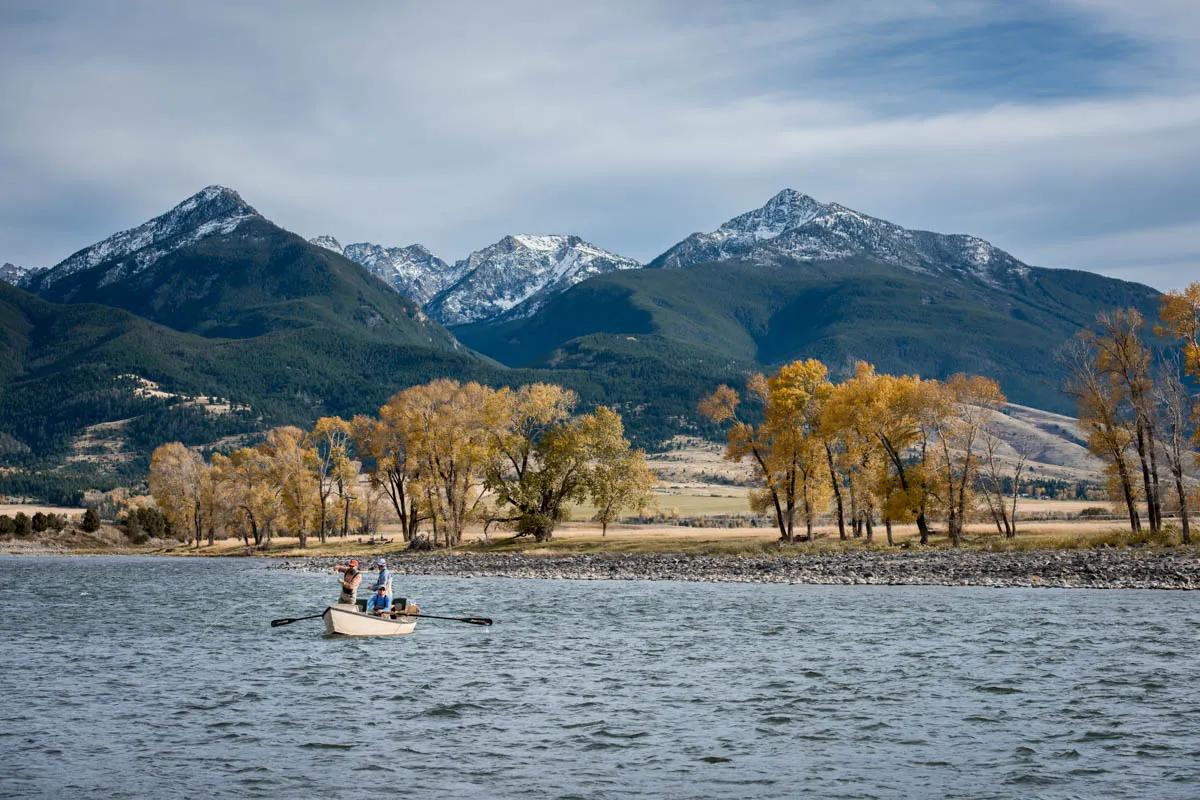
When to Find a Blue-Winged Olive Hatch
BWOs can begin to hatch on most creeks and rivers as early as March and can linger into May. Fall season BWOs can hatch as early as late August but typically start in mid-September and can last into November. Throughout the United States, BWOs can hatch as early as January and February on some Southern tailwaters and linger as late as December as well. Spring-time BWOs can hatch when water temps are in the 46 to 56 degree F range. The strongest hatches of Blue-Winged Olives in spring and fall are most often related to a unique shift in the short term weather conditions. In spring, BWO hatches are strongest on overcast days or in a light rain. Fall season BWOs have a similar range, and similar to the spring season the strongest hatches often coincide with specific weather events such as a passing cold front that includes overcast skies and light rain. Generally speaking, spring season BWOs are a little more consistent and will likely hatch regardless of weather but the intensity will vary based on short-term weather. In fall, BWOs are less frequent but can be very intense just before, during, and after a significant change from warm, sunny weather to cold, slightly rainy and overcast weather. The often least enjoyable weather days are the best BWO fishing days. Air temperature isn't as much a factor in spring as it is in fall, because water temperatures in spring are often rising more consistently compared to fall when water temperatures fluctuate a little greater on a daily basis due to lower over all stream flows. This factor of water temperature is amplified more on freestone rivers like the Gallatin and Yellowstone. Tailwater rivers like the Madison and Missouri often have less daily fluctuation than freestones.
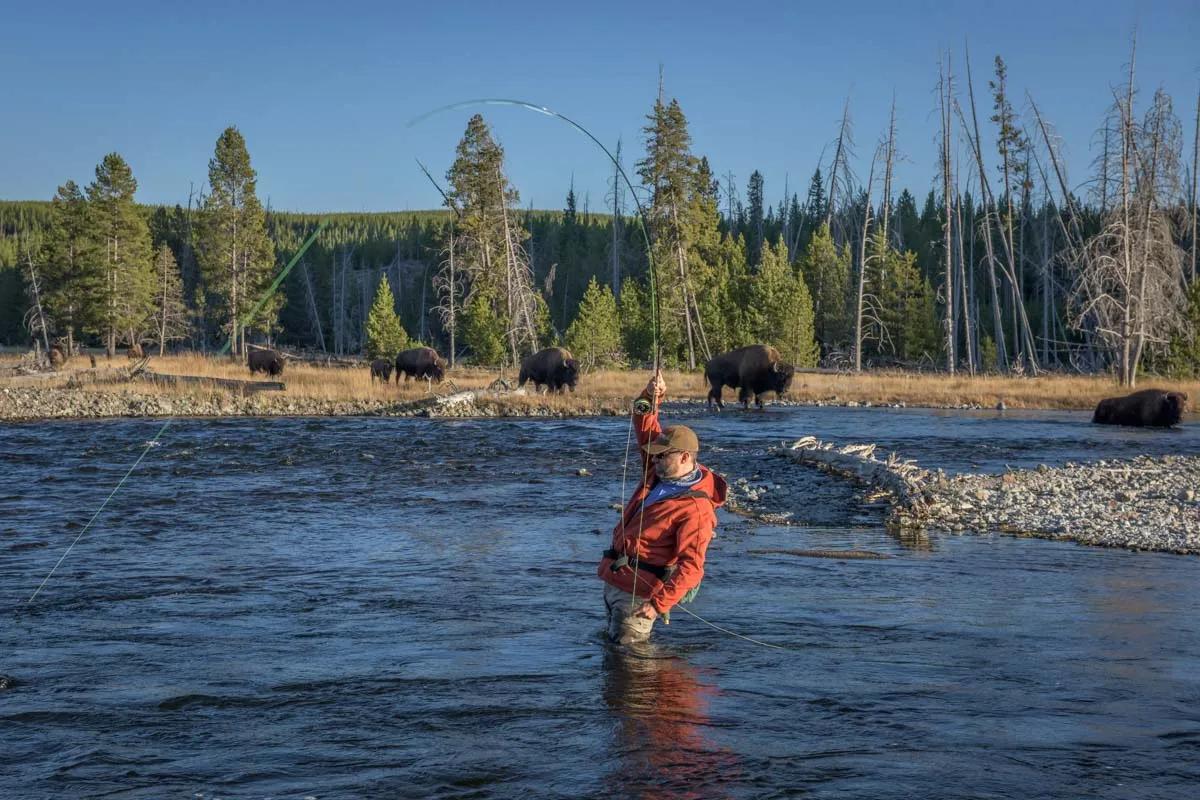
Where to Find the Best Blue-Winged Olive Hatches
Trout depend on mayflies for a large part of their diet. Some rivers have a greater abundance of mayflies than others. For example, the Paradise Valley Spring Creeks are famous for Blue Winged Olive and Pale Morning Dun mayfly hatches. Tailwater rivers like the Missouri and Madison Rivers have a loyal following of anglers that visit in spring and fall to enjoy the consistent fishing during a BWO hatch. Large and small freestones like the Yellowstone and Boulder Rivers can also have some great spring and fall BWO hatches. On most of these rivers, BWOs inhabit the slower water. Look for long runs, drop-offs near steep banks, and slower water near faster water. On days with calm winds, overcast and rain, look for backeddies, foamlines, and any places where adults that are unable to fly due to wet wings are being congregated. Because a strong BWO hatch is mostly dependent on water temps and conditions in the moment, the best hatches can occur at any hour of the day and may occur on one river but not another. Learn to watch the weather--for the strongest hatches look for changing conditions after a relatively consistent pattern. Then head to your favorite local river and be prepared with the right fly selection, tackle, and proper techniques.
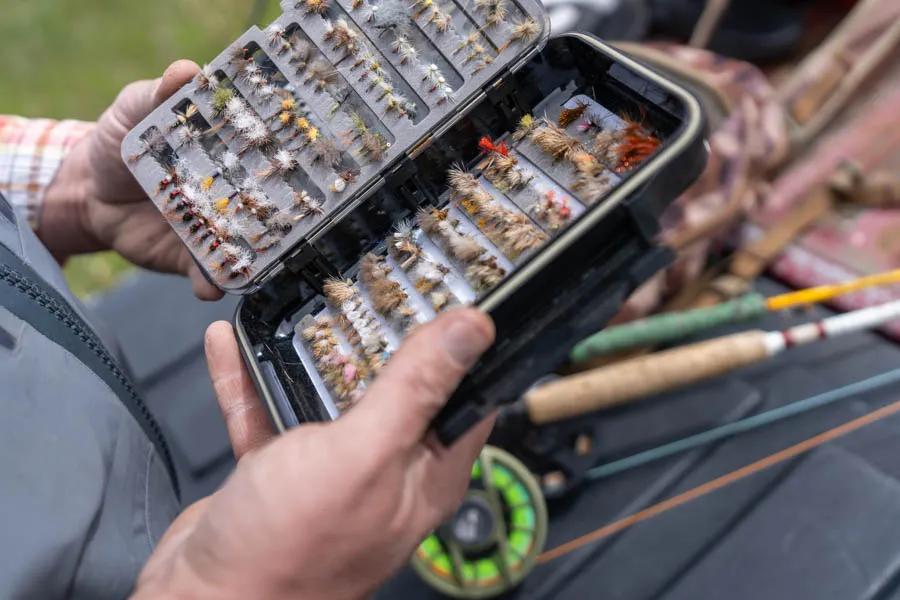
What You Need to Fish a Blue-Winged Olive Hatch
Flies. Because trout will feed on BWOs during any of the four stages, it is important to have a selection of nymphs, emergers, adult dries, and adult spinners. Let's start with your nymph selection. Traditional nymphs like beadhead Phesant Tails and Sawyer Pheasant Tails work well in sizes 16 to 22. More recent and popular patterns are the JuJu Baetis, Micro Mayfly, and any beadhead Perdigon patterns. Choose nymphs in sizes 16 to 22. Proven mayfly emerger patterns like WD-40s, Film Critics, and RS-2s, are very effective when trout are focusing on emergers. For dry flies/adult patterns, a Brook's Sprout Baetis floats well and can be used as an emerger or adult. A Parachute Purple Haze is almost always successful and can also be used in tandem with an emerger pattern as part of a two-fly rig. A Sparkle Dun or Compardun work well as a single dry fly. Additionally, because BWO adults don't always hatch perfectly and adults can become injured while hatching, a "cripple" style mayfly pattern can be very good. For spent mayflies a traditional Rusty Spinner is always a good choice.
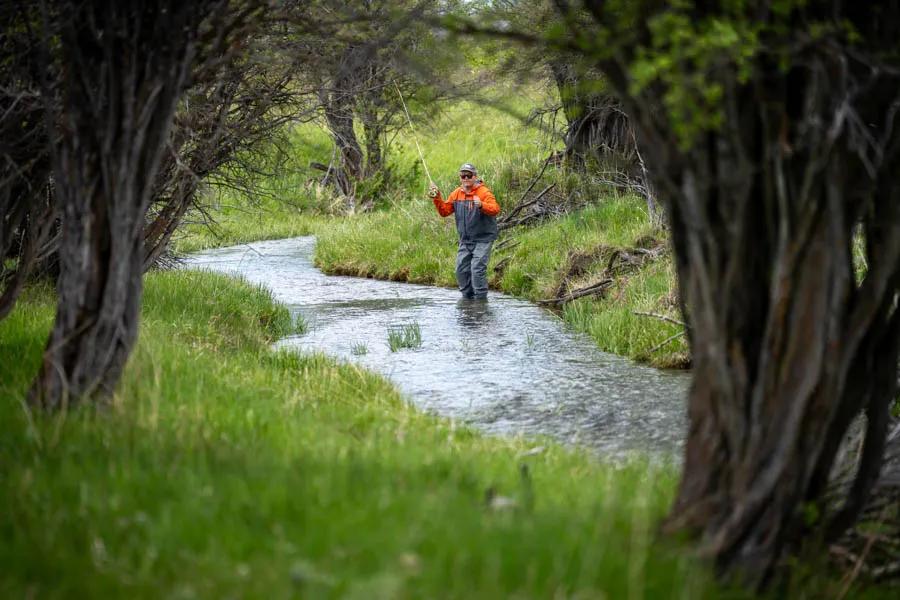
Casting ability. Learn a reach cast, a tension/water haul cast, and be better at double-hauling. A reach cast is essential for obtaining a long, drag-free presentation. Perform a reach cast by an extended follow through, across your body, of your cast after a stop is made on the forward cast. This follow through allows for a mend to be placed in the fly line before it lands on the water. A tension/water haul cast is an ideal cast when using weighted nymph rigs with a strike indicator. Begin by allowing the current to carry the fly line downstream of your standing position. Once the line has straightened out below you, use the tension of the current on the fly line to help you reposition the line upstream of you. Raise your rod hand to about head height and turn your palm upward to the sky. Then accelerate the rod forward and stop it as if in a normal forward casting motion. When you’re in a boat, the cast is performed in two parts—first, a “reverse” tension cast by starting with the fly line downstream and in front of you, then accelerating into a back casting motion, allowing the fly line and flies to land on the water behind you. Then, with a very short pause, go into a forward cast while the tension of the current behind you on the fly line and flies helps you reposition the forward cast. Lastly, refine or learn a double haul.
Leaders and tippet. Because fishing during BWO season in Montana means you are going to fish with nymphs, emergers, and dry flies, a good selection of tackle, including leaders and tippet, is important. For most nymph fishing situations our Montana fly fishing guides start with a 7.5 foot 4X leader or a 9 foot 4X leader. They then add some fluorocarbon tippet to the leader. Fluorocarbon is used almost exclusively for any subsurface fishing. Because of its chemistry it sinks more easily than traditional monofilament. BWO nymphs are small so have tippet in sizes 4X and 5X. 3X can work in some situations but choose a more supple fluorocarbon tippet such as Orvis Mirage. When trout shift their feeding from nymphs to emergers or adults on the surface, consider switching to monofilament leaders and tippet because monofilament is more likely to float on the surface. A sinking tippet will negatively affect the drift of a dry fly. 4X and 5X are the preferred sizes for emergers and dry flies. In some instances, like on the Paradise Valley Spring Creeks, 6X is often required.
Tackle. If fishing tandem flies as part of subsurface rig, choose an indicator that can hold the flies at the proper depth. The size and buoyancy is determined by the weight of your flies, the speed of the water, and the depth of the water you want to fish. For example on Montana's Madison River which has fast currents, choose a large first fly such as a sculpin and then the BWO nymph or emerger as the second fly, and then a 1/2-inch diameter size strike indicator. On the calm, tailwater section of the Missouri River where the fish feed at various depths, many guides on the Missouri River choose smaller indicators or even tufts of yarn. When you are fishing dry flies on the surface choose the correct fly floatants and powders as well. Liguid floatants are ideal for many BWO dry fly patterns, but not ideal when the flies contain CDC. CDC--cul du carnard--are feathers from a duck that are used in a lot of BWO patterns. When using flies with CDC choose a powder style fly floatant or fly floatant gel dressing. It is almost important to have a cloth or other means--such as a can of compressed air--for drying a fly that has become fully water logged.

Waders. Unlike fishing in the heart of summer when wading sandals and quick-dry pants are common, fishing during BWO season typically means cold and wet weather. Water temps are often in the mid 40s to mid 50s and the best days of fishing are often rainy and drizzly. If you plan to fish BWOs on your own, waders are essential. Even if you plan to fish BWOs with a fly fishing guide, waders are crucial for comfort, safety, and to most likely access the best waters at the best times.
When the angling calendar hits mid-September or mid-March, on many trout streams it is time to be on the lookout for hatches of Blue-Winged Olive mayflies. Inhabiting nearly every trout stream in the country, these small mayflies provide a big chunk of a trout's diet. Armed with more knowledge, the proper tackle and gear, and adding a few special casts to your quiver, you can have more successful fly fishing trips in spring and fall by understanding Blue Winged Olives.
